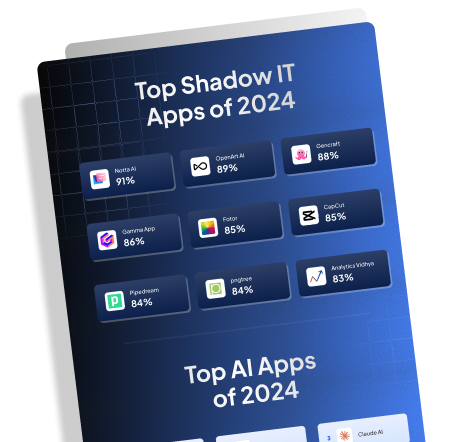What is Application Portfolio Management (APM)?
Application Portfolio Management (APM) is a process for overseeing and managing the entirety of software applications within an organization. It enables IT managers to balance the cost, benefits and risks of each application and make informed decisions about its role, status, and overall contribution to the business strategy.
But, isn’t Application Portfolio Management just about managing a bunch of applications?
The simple answer is no – it’s much more complex than that. APM stretches beyond just application management; it incorporates elements of:
- Portfolio Management: Overseeing a collection of business applications as a strategic portfolio, focusing on the applications’ performance, value contribution, and lifecycle.
- Application Rationalization: Evaluating existing applications to determine which should be kept, replaced, retired, or consolidated to optimize resource usage and support business processes efficiently.
- Software Asset Management: Managing the procurement, deployment, maintenance, utilization, and disposal of software applications within an organization.
- Technical Debt Management: Identifying and addressing the costs of maintenance associated with older or less efficient applications.
- Business-IT Alignment: Ensuring that the application portfolio supports and is in line with the strategic goals and capabilities of the business.
It’s also concerned with application integration, optimization, and governance.
Essentially, Application Portfolio Management is a holistic approach to handling application deployment, maintenance, and support, right from customization, testing, and application upgrades through to migration, ensuring applications’ scalability, reliability, and availability. A comprehensive APM strategy considers every facet of an application’s lifecycle, performance, and influence on the business.
Note: Torii’s SaaS Management Platform significantly amplifies your Application Portfolio Management efforts. It provides astute Shadow IT visibility, automates entire app lifecycles & optimizes license operations. Learn more.
Examples of Application Portfolio Management
In high-tech companies, where IT landscapes are complex and rapidly evolving, Application Portfolio Management (APM) plays a crucial role. Here are some examples that resonate with IT managers or directors in such environments:
Rationalization Project: An IT director at a software company initiated an application rationalization project. By evaluating their existing applications, they identified redundant apps, consolidated similar functions, and decommissioned outdated systems, leading to significant cost savings and efficiency gains.
Integrating Business and IT Goals: A high-tech enterprise used APM to align its application portfolio with its business capabilities. This process involved mapping applications to business processes and goals, ensuring that each application added value to the company’s operations.
Managing Technical Debt: An organization tackled its technical debt by assessing the long-term costs associated with maintaining older applications. This assessment led to the modernization of legacy systems, enhancing performance and reducing maintenance costs.
Shadow IT Discovery: In the case of Lunchbox, a real-world example, the use of Torii’s Shadow IT discovery tool in their APM process revealed four times more applications than initially known. This discovery was critical in managing their application portfolio effectively and led to substantial cost savings.
These examples demonstrate the diverse applications of APM in a high-tech environment, from rationalization and cost management to aligning IT with business goals and uncovering shadow IT. The strategic use of APM tools like ServiceNow and Torii can transform how organizations manage their software assets, leading to more informed decisions and optimized operations.
10 Step Plan For Application Portfolio Management (APM) Best Practices
- Comprehensive Application Inventory and Shadow IT Discovery: Create a detailed inventory of all applications used across your organization—past, present, and future. This inventory should cover all user groups and locations globally. In order for this to work, you will also need to discover unsanctioned apps (shadow IT) alongside the sanctioned applications.
Note: Torii’s SaaS Management Platform provides full visibility into your SaaS ecosystem. Test it out with a 14 day free trial.
This step is critical in order to gain insights into license utilization, ensuring that investments are optimized, and mitigating security risks associated with unauthorized software. - Identify Application Ownership: For every application, you should understand who the stakeholders are—that includes users, application owners, budget owners, etc. Through this process, you will find many orphaned applications with no owners and few to no users—this can often represent an easy win for cost optimization.
- Assess the Application Lifecycle: Evaluate every application’s current stage within its lifecycle. Recognize the value and potential risks associated with each phase, especially as applications approach end-of-life:
A simple SaaS Lifecycle:
Mapped > In review > Adapt (Sanctioned) > Optimization > Retire - Rationalize Application Usage: Conduct a thorough review to identify applications that are misused or underutilized. The goal is to rationalize the use of each application, ensuring they serve a strategic purpose.
- Determine Business Value and Costs: Analyze the total cost and business value of each application. This involves comparing the cost to similar applications in the industry and utilizing business capabilities to identify redundancies, risks, and opportunities for innovation.
- Develop an Application Architecture Framework: Formulate a framework that outlines your organization’s desired business, information, and application concepts over the long term. This step helps in planning for future needs and identifying gaps in the current application landscape.
- Map Concepts to the Application Landscape: Collaborate with business leaders and IT heads to create a comprehensive roadmap for application management and optimization. This involves aligning business objectives with IT capabilities and planning for consolidation where feasible.
- Institute Continuous Rationalization: Ensure that application portfolio management is an ongoing process. Continuous rationalization aligns IT resources with business goals, enhancing efficiency and effectiveness.
- Embrace Best Practices for APM: Leverage tools like Torii for effective SaaS operations automation, providing visibility over SaaS expenditures, and facilitating the development of custom integrations. These practices include risk assessment, lifecycle management, security enforcement, and application integration.
- Implement and Execute Strategic Roadmap: With a strategic roadmap in place, use automation and management platforms to streamline the APM process. This ensures your application portfolio remains organized, efficient, and aligned with your organizational goals.
Torii SaaS Management Platform can assist in all of the above aspects, providing effective SaaS operations automation, visibility over SaaS expenditure, and the capability to build custom integrations for your apps. It provides a centralized platform making the APM process easier, effective, and time-efficient.
By following these best practices, organizations can ensure that their application portfolio is optimized, cost-effective, and aligned with their strategic business objectives.
Related Tools for Application Portfolio Management
Several tools are pivotal in implementing and maintaining effective Application Portfolio Management (APM). These tools aid in inventory management, performance analysis, cost tracking, and alignment with business goals. Here’s a list of some essential APM tools:
Torii SaaS Management Platform: Specializes in uncovering shadow IT and managing SaaS applications. Its automated discovery capabilities are crucial for maintaining an accurate and comprehensive application inventory. You can design custom automation to flag and follow up with users any time they introduce a new app to the portfolio. Torii also helps you manage spend management, employee lifecycle automation and more.
ServiceNow Application Portfolio Management: Offers a comprehensive suite for managing applications, focusing on cost, usage, and performance metrics. It integrates well with ServiceNow’s broader IT service management platform.
Planview: Provides tools for portfolio and resource management, ideal for aligning IT investments with business strategies.
Apptio: Focuses on technology business management, helping organizations understand and manage the cost, quality, and value of their IT applications.
CAST Software Intelligence: Analyzes software health, complexity, and technical debt, offering insights for rationalizing and optimizing application portfolios.
Micro Focus: Offers solutions that include portfolio management, application modernization, and software delivery automation.
Flexera: Provides software asset management solutions to optimize software licensing costs and compliance.
BMC Helix: Offers a cloud-based ITSM platform that includes application portfolio management features, focusing on aligning IT services with business needs.
Snow Software: Specializes in software asset management, helping organizations optimize software spending and compliance.
LeanIX: Aims at enterprise architecture and cloud governance, supporting organizations in managing their IT landscapes effectively.
These tools vary in their specific features and focus areas, but collectively, they provide a robust set of capabilities for managing application portfolios efficiently. By leveraging these tools, organizations can gain better visibility into their application landscape, make informed decisions about technology investments, and ensure alignment with business goals.
Related Concepts in Application Portfolio Management
Understanding Application Portfolio Management (APM) involves familiarity with several related concepts. These concepts help in comprehending the broader context of APM and its role in organizational strategy and IT management. Here are some key related concepts:
Enterprise Architecture (EA): This refers to the conceptual blueprint that defines the structure and operation of an organization. EA aims to align a company’s strategy with its IT infrastructure, enhancing efficiency and effectiveness.
Software Asset Management (SAM): SAM involves managing and optimizing the purchase, deployment, maintenance, utilization, and disposal of software applications within an organization. It’s closely linked to cost management and compliance in APM.
Business Capability: This is the expression of what a business does and can do, often mapped in APM to ensure applications support these capabilities.
Technical Debt: This concept refers to the implied cost of additional rework caused by choosing an easy solution now instead of using a better approach that would take longer. Managing technical debt is a critical aspect of APM.
Application Rationalization: This is the process of strategically identifying business applications to determine which should be kept, replaced, consolidated, or retired to streamline operations and reduce costs. It’s a core activity in APM for optimizing the application portfolio.
SaaS Management: In the context of APM, this involves overseeing and optimizing the use and cost of Software-as-a-Service applications, which are increasingly prevalent in modern IT environments.
Project Management: This encompasses the planning, initiating, executing, controlling, and closing the work of a team to achieve specific goals. In APM, project management skills are essential for implementing changes to the application portfolio.
Business Process Management (BPM): This is the discipline of improving a business process from end to end by analyzing it, modelling how it works in different scenarios, executing improvements, monitoring the new process, and continually optimizing it.
Application Lifecycle Management: This encompasses the supervision of software from its initial planning through retirement. It involves making informed decisions about investment, maintenance, and decommissioning of applications.
Cloud Computing: The practice of using a network of remote servers hosted on the Internet to store, manage, and process data. In APM, cloud computing plays a vital role in determining the infrastructure strategy for application deployment.
Understanding these concepts helps IT managers and directors manage their application portfolios more effectively, ensuring alignment with business objectives and optimal use of IT resources.
FAQs on Application Portfolio Management
Application Portfolio Management (APM) is the practice of managing a collection of software applications in an organization in a coordinated way. It involves evaluating, rationalizing, and planning applications to ensure they align with business objectives and are cost-effective.
APM is crucial for ensuring that an organization’s software applications are optimally supporting its business processes, maximizing ROI, reducing costs, managing risks, and aligning IT strategy with business goals.
Key components include application inventory, business alignment, application rationalization, cost management, technical debt management, and lifecycle management.
APM helps identify and prioritize technical debt by assessing the long-term costs and risks associated with maintaining outdated or inefficient applications, guiding decisions on upgrades, replacements, or retirements.
Application rationalization is the process of analyzing an organization’s application portfolio to determine which applications should be kept, replaced, consolidated, or retired to streamline operations and reduce costs.







